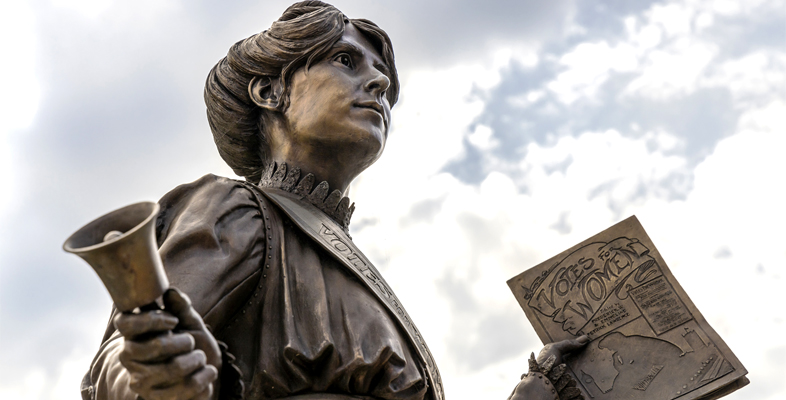4.2 Photographic records
The steep rise in the use of cameras in the second half of the nineteenth century means that historians have a rich archive of photographic records from this time onwards, and you’re now going to consider how these further primary sources might contribute to the development of your thinking about the suffragettes.
Is it possible to find photographic records of the Women’s Coronation Procession online? Luckily, an archive of over a hundred suffragette images is held by the Museum of London, and these images can be viewed through its website.
Activity 5 Images of the Women’s Coronation Procession
Go to the Museum of London Prints [Tip: hold Ctrl and click a link to open it in a new tab. (Hide tip)] website and search for ‘women’s coronation procession’. This should bring up a selection of images relating to the procession. Note that if you click on an image, you will see a larger version of it and a brief text to explain its contents; it is also possible to enlarge the image further.
Now answer the following questions, either in the text boxes below or in your learning notebook:
What evidence can you find here about the range of groups that supported women’s suffrage?
Discussion
Most in evidence is the range of nationalities present – there are images of Irish, Welsh and Scottish contingents, and a particularly striking image of a group from India in the Empire Pageant. (The campaign for women’s suffrage was an international movement, and by 1911 there were parts of the world that had already granted women the vote in elections. Dominions within the British Empire that had a degree of self-government had led the way – the vote was granted to women in New Zealand in 1893 and in Australia between 1893 and 1909.)
What do these images suggest about the level of organisation that went into this procession?
Discussion
Clearly, a lot of organisation had gone into creating this well-coordinated and large-scale demonstration. The NUWSS and WSPU were only two of the leading lights among a range of women’s suffrage societies, and together these groups were able to summon thousands of supporters from across the UK and beyond. One of the WSPU’s main skills was publicity, and as an example of this you may have come across the handbill that it produced to advertise the procession (image number 001308 on the Museum of London Prints website). Note that, like so much of the WSPU’s output, it is printed in the WSPU colours of purple, white and green.
This section has given you the opportunity to find out about the Women’s Coronation Procession and has introduced you to two types of primary sources – newspaper reports and photographs. It is worth noting, however, that this is one of many different peaceful demonstrations that took place at the time. It wasn’t all arson and window breaking.
The aim of this section has been to convey that women’s suffrage was truly a mass movement, supported by many peaceful ‘moderates’ as well as militant activists. Research has shown that members of the NUWSS and the WSPU supported one another at different stages of the campaign (see Crawford, 2001, pp. 735–6). However, many campaigners were faced with the dilemma of choosing between ‘moral force’ and ‘physical force’ tactics. Was an approach of sticking to moral argument the best long-term path to success, or was physical action needed to get things moving? Could physical action undermine the cause because of the public response?
